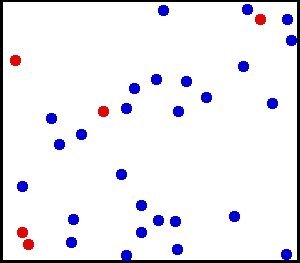Nuclear Fusion
- Introduction to Nuclear Fusion
- Physics of Nuclear Fusion
- Energy from Nuclear Fusion
- Fusion Reactors
- Confinement and Heating
- Fusion Reactor Design
- Radiation and Safety
- Fusion Reactor Materials
- Fusion and the Environment
- Challenges in Nuclear Fusion
- The Future of Nuclear Fusion
Fusion Plasmas
Kinetic Theory of Plasmas

Mathematical model explaining macroscopic properties of gases in microscopic terms.
The kinetic theory of plasmas is a fundamental concept in understanding nuclear fusion. Plasma, often referred to as the fourth state of matter, is an ionized gas consisting of ions, electrons, and neutral particles. It is the primary medium in which nuclear fusion reactions occur.
Definition and Overview of Plasma
Plasma is a state of matter that is distinct from solids, liquids, and gases. It is composed of a collection of free-moving electrons and ions - atoms that have lost electrons. This state of matter is created by heating a gas or subjecting it to a strong electromagnetic field, stripping the gas molecules of their electrons.
Basic Properties of Plasma
Plasmas exhibit unique properties that set them apart from other states of matter. They are highly conductive and respond strongly to electromagnetic fields. Due to their ionized nature, plasmas also exhibit collective behavior. This means that the motion of a single particle in the plasma is influenced by the average effect of the motion of all other particles.
Derivation of the Boltzmann Equation
The Boltzmann equation is a statistical law used in physics to describe the behavior of a fluid in a state of near equilibrium. In the context of plasma, the Boltzmann equation is used to describe the distribution function of plasma particles in phase space. The equation is derived from the laws of conservation of energy and momentum, and it provides a complete description of the state of a dilute gas.
Collisional Processes in Plasmas
Collisional processes are key to understanding plasma behavior. In a plasma, collisions can occur between electrons, between ions, or between electrons and ions. These collisions can lead to energy exchange, momentum transfer, or even changes in the internal states of the particles involved. Understanding these processes is crucial for controlling plasma behavior in a fusion reactor.
Plasma Oscillations
Plasma oscillations, or plasma waves, occur when the equilibrium of a plasma is disturbed. These oscillations are caused by the collective effects of the plasma's charged particles. Understanding plasma oscillations is important because they can lead to energy loss in a fusion reactor, and controlling these oscillations is a key challenge in achieving stable nuclear fusion.
In conclusion, the kinetic theory of plasmas provides a fundamental understanding of the behavior of plasmas, which is crucial for harnessing nuclear fusion. It provides the basis for understanding how plasmas respond to external fields, how energy and momentum are transferred within a plasma, and how disturbances can lead to plasma oscillations.